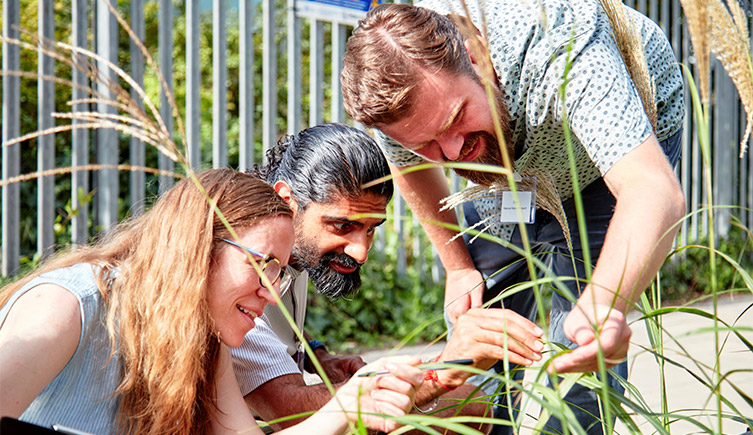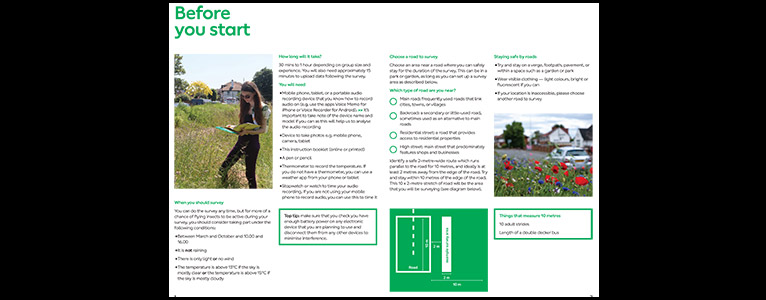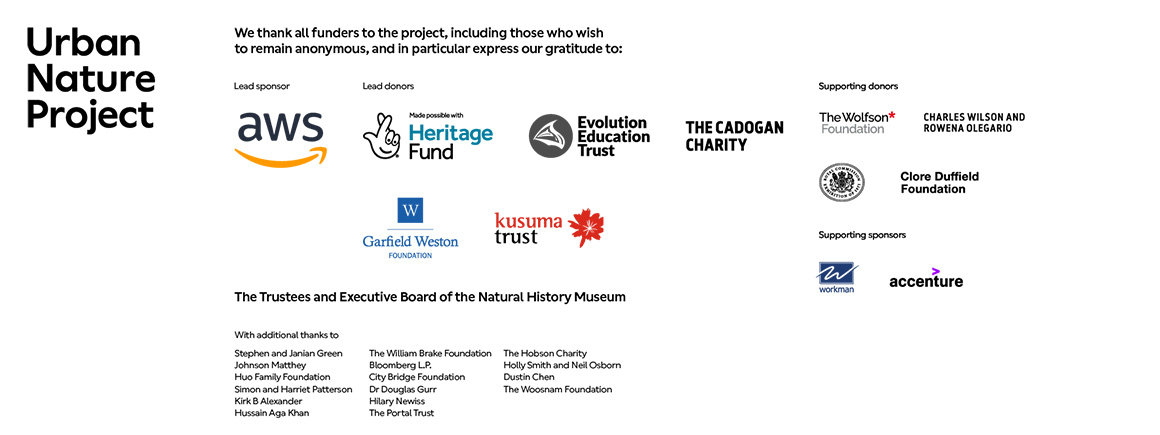This survey and project has now closed.
Thank you to all who took part.

Thank you to all who took part.
Recorded audio and observed insects by the side of roads
Type of activity: Outdoors
Who can take part? Everyone
When? Spring through to Autumn
Best time of day: between 10am - 4pm
Where? Roadsides anywhere in the UK
How long will it take? 20 minutes
Hundreds of participants across the UK collected audio recordings and insect observations to better understand how road noise affects insects.
Insects are vital for many habitats, but they may struggle to communicate in noisy environments.
This survey was part of our Nature Overheard programme.
All you need is a few spare minutes and a mobile phone.

Take a look at the Survey Booklet, which has full instructions and an insect guide.
Ed Baker, Acoustic Biology Researcher for the project, explains how to perform the survey
Nature Overheard Survey instructions audio described version (3 minutes 2 seconds)
Any street with some greenspace next to it: a main road, a high street, a residential street or a backroad.
Your 10m x 2m survey area, parallel to the road, can be up to 10 metres away from the curb side. It should be at least two metres away for safety reasons (usually a pavement will count as this).
These frequently asked questions specifically relate to the Nature Overheard roadside activity. If your question is not answered here, email the team your question at communityscience@nhm.ac.uk with Nature Overheard as the subject.
Your 10m x 2m survey area should be at least two metres away from the edge of the road for safety reasons, but otherwise you can complete your survey at any other distance away from the road, so long as it is no more than 10 metres away from the edge.
If you are not sure what groups the creatures you see fit into, just make sure to take a photo of each one and record them in the 'other' category, along with the number you saw. This will enable us to group your findings for you.
We hope to build species-level recordings into this survey in the future, but for now please try and take a photo of everything you see, even if you know what it is.
Please submit all information that you collected during your survey even if you did not record any insects as it is still valuable to know where there are no insects!
We hope that this won’t happen, but please be sure to upload the best photo of each individual you saw.
Please take your time when submitting your data to avoid any errors, however, if this happens, please email us at communityscience@nhm.ac.uk with Nature Overheard as the subject.
The data from the project will go onto the Museum’s new data platform, the Data Ecosystem, which is being built using Amazon Web Services technologies. Any personal data is limited to:
1) a name, necessary for the purposes of forming a biological record
2) an email address, should you wish and consent to receive news and project updates.
You can also read the Museum's full privacy notice.
We encourage you to share your data as soon as possible following your survey to ensure accuracy and for it to be included in the latest analysis.
To receive regular updates and summaries of the data submitted, be sure to include an email address and consent to communications from the Community Science Programme when you upload data.
Or you can sign up to our mailing list.
Repeated surveys in the same area will be extremely valuable to help us gather as much information as possible and look at changes over time, but if you’d like to survey a different road then this information is also valuable.
Audio recordings are a essential part of our survey - they serve as the foundation for improving our algorithm’s ability to process and distinguish between insect and human sounds.
Don't worry if you don't think you can hear any insect activity on your recording - it's important we collect as much data as possible, as it all helps to analyse the recordings.
We’d love for you to take part as often as possible, either at the same road or you can choose a few different ones. A good target to aim for is once a month or three times across spring, summer, and autumn.
If you repeating the survey without needing futher instructions, you can download the Simplified survey booklet (PDF 1.4MB).
How about making it a shared activity? Participating with friends, family, or neighbours can be more fun and will amplify the impact of your efforts. If you are running a group survey, we have a Group leader guide (PDF 6.7MB).
What did I enjoy most about taking part?
Being outside discovering the mix of insects in our survey area which are generally overlooked. Seeing friends amazed with their finds, spotting insects which they had never seen previously, photographing and then researching what they had discovered.
Matthew Jeffries
Corporate volunteer, N-ERGISE
Don’t miss out on the latest findings from our data analysis. Join the Community Science mailing list to find out about the survey's discoveries.
Post-survey questionnaire
If you've taken part in the survey, please give us your feedback by completing a short questionnaire.

We've collected a lot of audio data during the survey, and we now need to decipher the sounds you recorded. Can you tell the chatter of animals from the hum of vehicles or the noises made by humans?
Nature Overheard is part of the Urban Nature Project. We thank all those who have generously contributed, including:
